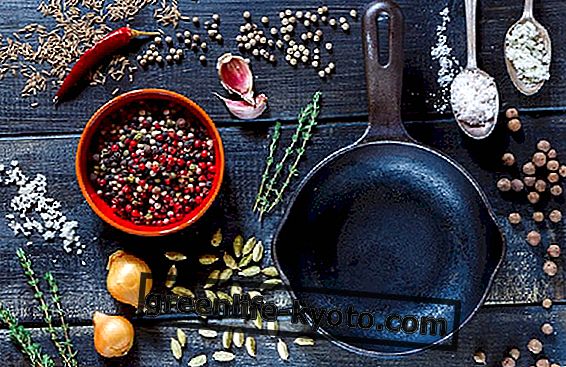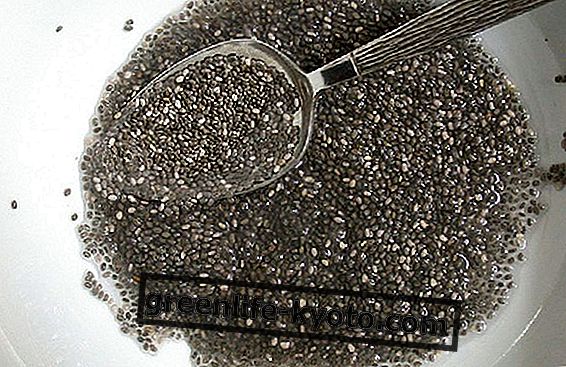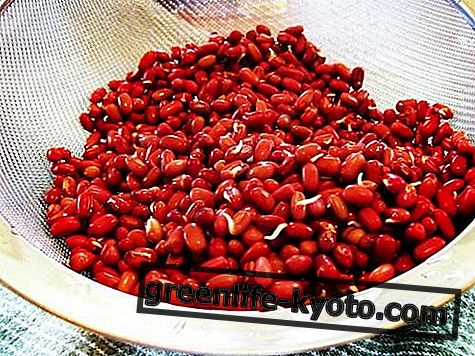The eucalyptus ( Eucalyptus globulus ) is a plant of the Myrtaceae family. The essential oil that is obtained is useful for coughs, colds and sinusitis but it is also very used in cosmetics. Let's find out better.
>

Eucalyptus properties
Eucalyptus leaves contain an essential oil, particularly rich in eucalyptol, terpenes (pinene, camphene, fellandrene); aldehydes ; polyphenols (gallic acid, ferulic acid, gentisic acid); flavonoids (rutoside, hyperoside) and tannins . These active ingredients give the plant a balsamic, fluidifying and expectorant action of catarrhal secretions of the respiratory tract. For this reason it is used in phytotherapy in inflammation and congestion, such as coughs, colds and in the treatment of sinusitis.
Furthermore, due to the presence of essential oil, the eucalyptus has a very effective antibacterial and antiseptic action for diseases of the urogenital tract in case of cystitis, leucorrhoea and candidiasis, for which it is also recommended by virtue of the deodorising action .
For cosmetic use, eucalyptus preparations exert a good antiseptic and healing action on purulent skin infections and soothing on burns . Very suitable for cleansing greasy skin and hair, to which it returns shine.
You can delve into the 5 herbs to treat colds

Method of use
INTERNAL USE
Its balsamic action could be irritating to the gastric mucosa, if taken alone. For this reason it is always better to use it in mixtures with mucosal protective plants such as mallow. in addition, due to the hypoglycemic action, do not take oral hypoglycemic agents at the same time.
INFUSION
1/2 teaspoon eucalyptus eucalyptus leaves, in a spoonful of mallow for 1 cup of water
Pour the eucalyptus and mallow leaves into the boiling water and turn off the heat. Cover and leave to infuse for 10 min. Filter the infusion and drink it in case of inflammation of the respiratory system, as it dissolves the phlegm and improves breathing or in the presence of urinary tract infections.
- Mother tincture of eucalyptus: 30 - 40 drops, 2-3 times a day in case of respiratory tract disease and diabetes.
Contraindications
Eucalyptus essential oil, if used in large quantities, can cause nausea, vomiting and diarrhea. It is therefore not recommended for use during pregnancy and lactation. In case of sensitive subjects it can also cause dermatitis and skin irritation.
Description of the plant
Fast-growing evergreen tree (reaches 20 m in 6-7 years), in Australia, where it comes from, it can even exceed 90 m . The trunk has smooth, ash-gray bark, which comes off in thin and elongated plates. The wood is reddish. In the eucalyptus globulus the juvenile leaves are opposite, of blue color, while the adult leaves are alternate, dark green, sickle-shaped and hard. The flowers are usually grouped in flower buds, more or less numerous. The fruit is a woody, hard, wrinkled and wax-covered capsule. The seeds are numerous and very small. The whole plant has an aromatic smell and a bitter taste.
The eucalyptus habitat
Originally from Oceania (especially Tasmania, Australia and New Guinea), it generally grows in temperate zones . In Italy it is widespread in the center and in the south and, in particular, in Elba and in Sicily.
Background
The botanical name Eucalyptus, derives from the Greek εὖ, " good ", and καλύπτω, "to hide ", referring to the fact that the petals hide the rest of the flower, until flowering. It was introduced in Europe in the middle of the IXX sec. from Australia and Tasmania. Eucalyptus grows rapidly and absorbs a large amount of water from the soil, which is why it is used to drain swampy soils, helping to prevent the development of malignant mosquitoes that cause malaria. During and after the reclamation of the Agro Pontino (Italy - lower Lazio), which occurred during the Fascist period, numerous specimens of eucalyptus were planted, because the windbreak lines created by the rows of these trees constituted a valid protection against the strong wind and the trumpets air (quite common in this area, especially in the autumn); therefore the intensive planting of numerous specimens has, over time, contributed to the natural reclamation of the marsh lands and, subsequently, to the maintenance and defense of arable land from stagnant waters.
In collaboration with Erboristeria del Pigneto













